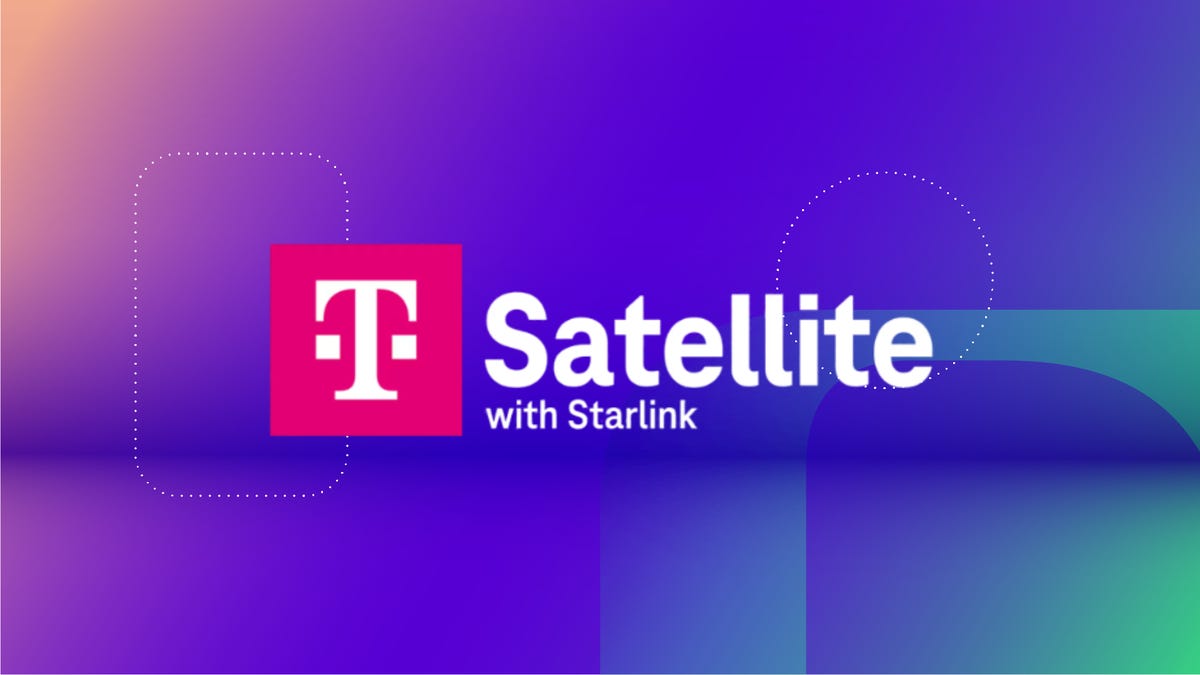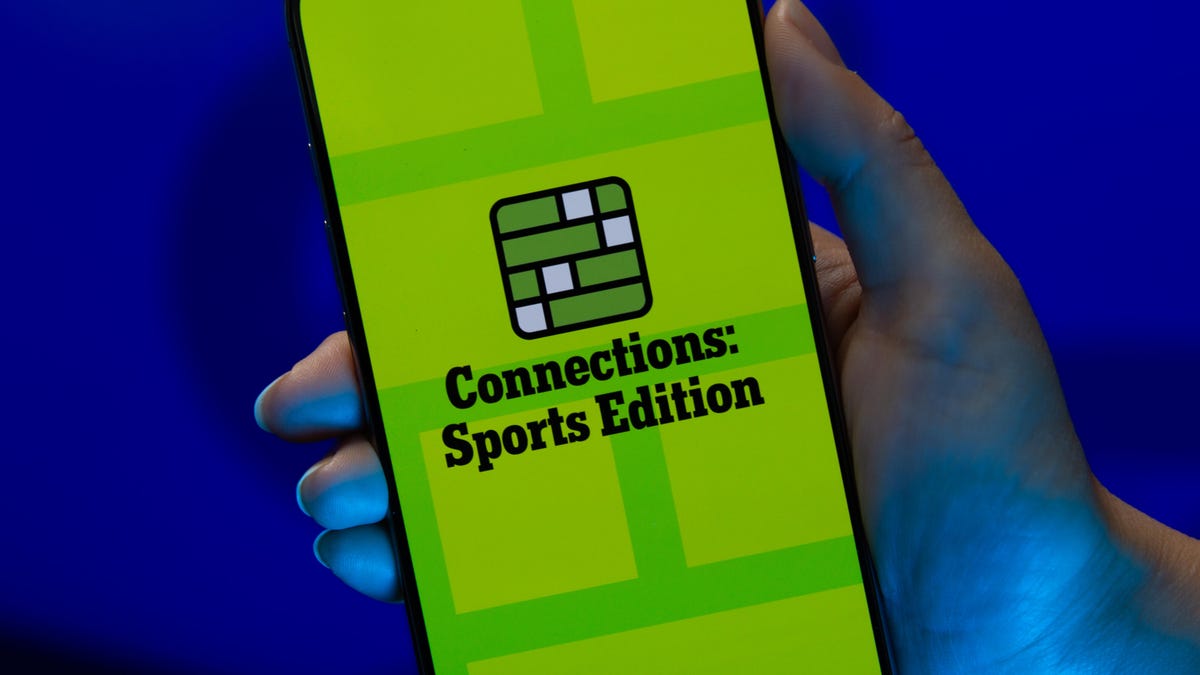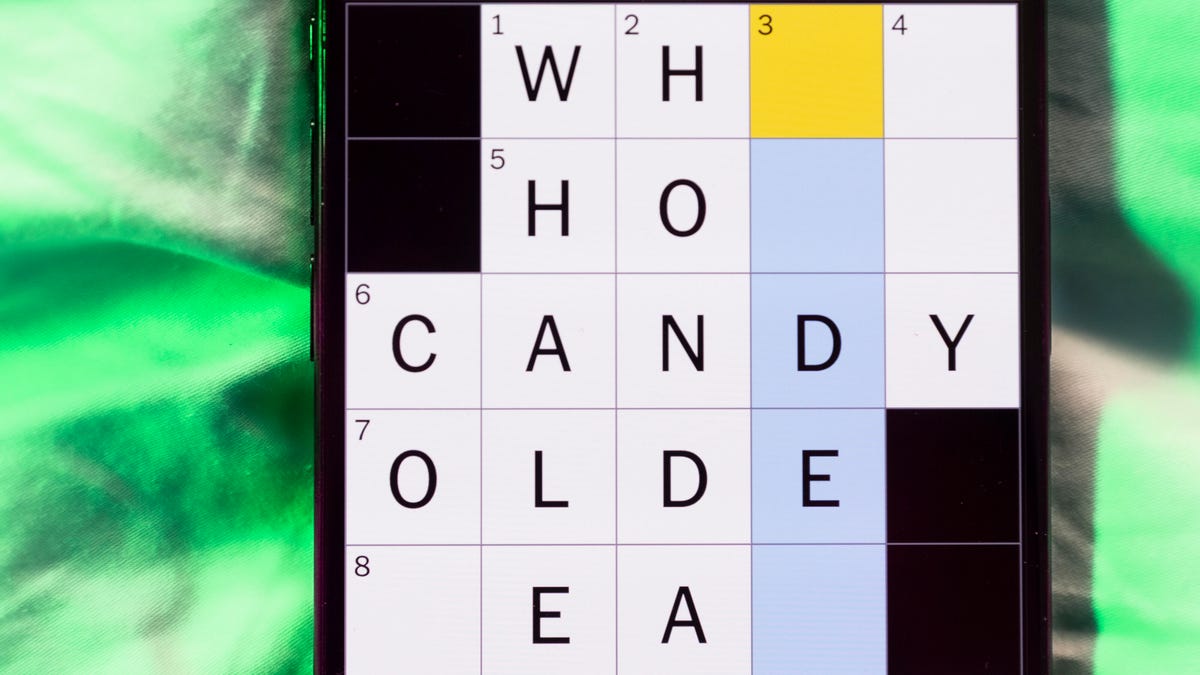Technologies
T-Mobile Is Bringing Starlink Satellite Access to Your Phone, Even if You’re on a Different Carrier
Are dead zones a thing of the past? T-Mobile and Starlink’s new satellite cell service thinks so. Here’s what you need to know.

Going off-grid might soon be a thing of the past, as T-Mobile’s partnership with SpaceX’s Starlink satellite internet service gets ready to launch on July 23. The direct-to-cell messaging service, called T-Satellite, will also be available to AT&T and Verizon cellphone customers.
T-Mobile says its goal is to «eliminate mobile dead zones for good» by way of 657 Starlink satellites that’ll be used exclusively for cellphone service. T-Satellite has been in beta testing since December 2024, with nearly 1.8 million users signing up so far.
The direct-to-cell messaging service represents a major step forward in mobile technology: It works with most phones made during the last four years, according to T-Mobile, instead of requiring dedicated hardware. It’ll be available to T-Mobile, AT&T and Verizon customers for $10 a month — or free for anyone on T-Mobile’s Experience Beyond or Go5G Next plans.
«At the end of the day, it’s nice to be able to send a selfie when you’re in a place where there is no coverage, but it’s vital to be able to connect to emergency services,» Mike Katz, T-Mobile president of marketing, strategy and products, told CNET’s Jeff Carlson. «We just think that with a technology like this, no customer should ever be in a situation where they are unconnected in an emergency.»
Sadly, T-Mobile has already had a reason to test out this emergency service, when it enabled T-Satellite earlier this week in communities affected by massive flooding in Central Texas. T-Mobile customers in the area are able to use text-to-911 and basic text messaging, and they can receive emergency alerts on compatible devices.
In the future, T-Satellite will be free for emergency uses across the country. The company said 911 texting will be available later this year to «any mobile customer with a compatible device, regardless of carrier or whether or not they are subscribed to the service.»
What is T-Satellite?
T-Satellite is a partnership between T-Mobile and Starlink that will allow direct-to-cell SMS messaging accessibility in areas where there is no cellular coverage. Starlink has more than 7,000 low-Earth orbit satellites in the sky, and now, 657 of them will be devoted entirely to T-Satellite. The goal is to expand coverage into the 500,000 square miles of the US that traditional cell towers can’t reach, says T-Mobile.
“When you leave the terrestrial network and you go to a place where there’s no network, your phone will automatically search for and connect to the satellite network, which is quite different than any other of the satellite systems that are out there that force you to manually connect, and you have to point your phone up to the sky,» says Katz.
Satellite connectivity in cellphones isn’t exactly new — iPhones have had it since 2022 — but it’s typically been reserved for SOS messaging to connect you with an emergency dispatcher. On July 23, T-Satellite users will be able to send SMS texts on iPhone and Android. Android users will also get MMS immediately, with iPhone support “to follow.”
This means users will be able to send images and audio clips in addition to standard text messages. In October, the service will expand to include data support in third-party apps like AccuWeather, AllTrails, WhatsApp and X. The access takes advantage of hooks built into iOS and Android software, so developers can make their apps capable of sending data through the narrow amounts of bandwidth available via satellite.
This is far beyond what the other phone carriers have launched so far in the satellite realm — largely due to T-Mobile’s partnership with Starlink. AT&T and Verizon have both partnered with AST SpaceMobile for satellite messaging, and Verizon told CNET’s Eli Blumenthal last year that it’s still planning on working with Amazon’s Project Kuiper, which launched its first 27 satellites on April 28, 2025.
“Despite things that our competitors have said, they are way, way behind on this technology,” says Katz.
How much will T-Satellite cost?
On July 23, T-Satellite will be available to AT&T, T-Mobile and Verizon customers for a standalone $10 per month. But there’s one exception: Customers on T-Mobile’s Experience Beyond plan ($100 per month for one line) or the Go5G Next plan will get the service for included in the cost of the plan going forward, and those on the Experience More plan ($85 per month) will get it through the end of the year.
Even if you don’t pay the $10 a month, T-Mobile says 911 texting will be available later this year “to any mobile customer with a compatible device, regardless of carrier.”
If you’re a Verizon or AT&T customer, you’ll have to activate T-Satellite as a second eSIM on your phone to take advantage of the service. You can find instructions on setting up the eSIM here.
Which phones are supported?
Most phones released in the past couple of years will work with T-Satellite. Here are the devices that are currently compatible with the beta version:
Apple
- iPhone 13, iPhone 14, iPhone 15 and iPhone 16 (all models)
- Google Pixel 9
- Google Pixel 9A
- Google Pixel 9 Pro
- Google Pixel 9 Pro XL
- Google Pixel 9 Pro Fold
Motorola
- Moto G Stylus 2025
- Moto Razr 2024
- Moto Razr Plus 2024
- Moto Razr 2025
- Moto Razr Plus 2025
- Moto Razr Ultra 2025
- Moto Razr Ultra Plus 2025
Samsung
- Samsung Galaxy A25 5G SE*
- Samsung Galaxy A35 5G
- Samsung Galaxy A36
- Samsung Galaxy A36 SE
- Samsung Galaxy A53 5G
- Samsung Galaxy A54 5G*
- Samsung Galaxy S21
- Samsung Galaxy S21 Plus
- Samsung Galaxy S21 Ultra
- Samsung Galaxy S21 FE
- Samsung Galaxy S22
- Samsung Galaxy S22 Plus
- Samsung Galaxy S22 Ultra
- Samsung Galaxy S22 FE
- Samsung Galaxy S23
- Samsung Galaxy S23 Plus
- Samsung Galaxy S23 Ultra
- Samsung Galaxy S23 FE
- Samsung Galaxy S24
- Samsung Galaxy S24 Plus
- Samsung Galaxy S24 Ultra
- Samsung Galaxy S24 FE
- Samsung Galaxy S25
- Samsung Galaxy S25 Plus
- Samsung Galaxy S25 Ultra
- Samsung Galaxy S25 Edge
- Samsung Galaxy XCover 7 Pro
- Samsung Galaxy Z Flip 3
- Samsung Galaxy Z Flip 4
- Samsung Galaxy Z Flip 5
- Samsung Galaxy Z Flip 6
- Samsung Galaxy Z Fold 3
- Samsung Galaxy Z Fold 4
- Samsung Galaxy Z Fold 5
- Samsung Galaxy Z Fold 6
*Some non-T-Mobile device variants are not satellite-capable.
When T-Satellite launches on July 23, the following devices will also be compatible:
Motorola
- Motorola Edge 2024
- Moto G 2024
- Moto G Stylus 2024
- Moto G 5G 2024
- Moto G Stylus 5G 2024
Samsung
- Samsung Galaxy A14
- Samsung Galaxy A15*
- Samsung Galaxy A16
- Samsung Galaxy A35
- Samsung Galaxy A53*
- Samsung Galaxy XCover6 Pro
*Some non-T-Mobile device variants are not satellite-capable.
T-Mobile
- T-Mobile Revvl 7
- T-Mobile Revvl 7 Pro
How to try T-Mobile’s Starlink service today
If you’re anxious to try T-Mobile’s Starlink satellite messaging service and don’t want to wait until July 23, you can still attempt to sign up for the beta. I wouldn’t hold out too much hope, though — when I entered my information, I got a message back saying, “Due to high demand, we’re admitting beta testers on a rolling basis. Keep an eye out for an update in the coming weeks.”
Technologies
Chrome Autofill Now Supports Passport, Driver’s License and Vehicle Info
Soon, you’ll never need to remember anything ever again.

Computer users are accustomed to web browsers autofilling everything from names and addresses to credit card numbers. Now, Google Chrome is adding new enhanced autofill options that allow users to automatically populate fields for passports, driver’s licenses, and their vehicle’s license plate or VIN, Google said in a blog post on Monday.
Desktop users must choose to turn on the feature, which is called enhanced autofill. Otherwise, it stays off. To turn it on, open Chrome, and at the top right of your browser, select more, then settings, then autofill and passwords. Finally, choose enhanced autofill and turn it in.
Google says Chrome now can «better understand complex forms and varied formatting requirements, improving accuracy across the web.» The company also says that enhanced autofill will be «private and secure.»
This enhanced autofill update is available in all languages, and more data options will be supported in the coming months.
A representative for Google said the company had no additional comment.
Don’t miss any of our unbiased tech content and lab-based reviews. Add CNET as a preferred Google source.
Chrome is a critical component in Google’s business. The web browser, currently the most popular in the world with a 73% market share, according to GlobalStats, provides the company with valuable user data that it uses to sell advertising. Advertising is how Google makes the majority of its revenues. New features help keep users loyal to Chrome, making it more difficult for them to switch to other browsers, including those from companies like Perplexity and OpenAI.
Technologies
Today’s NYT Connections: Sports Edition Hints and Answers for Nov. 4, #407
Here are hints and the answers for the NYT Connections: Sports Edition puzzle for Nov. 4, No. 407.

Looking for the most recent regular Connections answers? Click here for today’s Connections hints, as well as our daily answers and hints for The New York Times Mini Crossword, Wordle and Strands puzzles.
Today’s Connections: Sports Edition is a tough one. The Connections: Sports Edition puzzle makers will never run out of categories because they have discovered they can just pick one athlete and make a connections group out of four facts about that person. They do that today with the blue category, so if you don’t know that one player, you’re out of luck. If you’re struggling but still want to solve it, read on for hints and the answers.
Connections: Sports Edition is published by The Athletic, the subscription-based sports journalism site owned by the Times. It doesn’t show up in the NYT Games app but appears in The Athletic’s own app. Or you can play it for free online.
Read more: NYT Connections: Sports Edition Puzzle Comes Out of Beta
Hints for today’s Connections: Sports Edition groups
Here are four hints for the groupings in today’s Connections: Sports Edition puzzle, ranked from the easiest yellow group to the tough (and sometimes bizarre) purple group.
Yellow group hint: Get up and go!
Green group hint: College hoops.
Blue group hint: Famous basketball player.
Purple group hint: Not fair, but…
Answers for today’s Connections: Sports Edition groups
Yellow group: Energy.
Green group: Men’s college basketball teams with the most championships.
Blue group: Associated with Damian Lillard.
Purple group: Foul ____.
Read more: Wordle Cheat Sheet: Here Are the Most Popular Letters Used in English Words
What are today’s Connections: Sports Edition answers?
The yellow words in today’s Connections
The theme is energy. The four answers are pep, verve, vigor and zip.
The green words in today’s Connections
The theme is men’s college basketball teams with the most championships. The four answers are Kentucky, UCLA, UCONN and UNC.
The blue words in today’s Connections
The theme is associated with Damian Lillard. The four answers are 0, Dame Time, Trail Blazers and Weber State.
The purple words in today’s Connections
The theme is foul ____. The four answers are out, shot, territory and tip.
Technologies
Today’s NYT Mini Crossword Answers for Tuesday, Nov. 4
Here are the answers for The New York Times Mini Crossword for Nov. 4.

Looking for the most recent Mini Crossword answer? Click here for today’s Mini Crossword hints, as well as our daily answers and hints for The New York Times Wordle, Strands, Connections and Connections: Sports Edition puzzles.
Need some help with today’s Mini Crossword? There are a few tricky clues, so read on for the answers. And if you could use some hints and guidance for daily solving, check out our Mini Crossword tips.
If you’re looking for today’s Wordle, Connections, Connections: Sports Edition and Strands answers, you can visit CNET’s NYT puzzle hints page.
Read more: Tips and Tricks for Solving The New York Times Mini Crossword
Let’s get to those Mini Crossword clues and answers.
Mini across clues and answers
1A clue: Quickly fall asleep after a long day
Answer: CRASH
6A clue: 1/16 of a pound
Answer: OUNCE
7A clue: Where chess, shampoo and the number zero were invented
Answer: INDIA
8A clue: Uproar
Answer: FUROR
9A clue: Opposite of saved
Answer: SPENT
Mini down clues and answers
1D clue: Fancy hairdos
Answer: COIFS
2D clue: Period preceding a big event
Answer: RUNUP
3D clue: Tennis great Agassi
Answer: ANDRE
4D clue: Descendant of a wealthy family
Answer: SCION
5D clue: Symbol for «like» on Instagram
Answer: HEART
-

 Technologies3 года ago
Technologies3 года agoTech Companies Need to Be Held Accountable for Security, Experts Say
-

 Technologies3 года ago
Technologies3 года agoBest Handheld Game Console in 2023
-

 Technologies3 года ago
Technologies3 года agoTighten Up Your VR Game With the Best Head Straps for Quest 2
-

 Technologies4 года ago
Technologies4 года agoVerum, Wickr and Threema: next generation secured messengers
-

 Technologies4 года ago
Technologies4 года agoBlack Friday 2021: The best deals on TVs, headphones, kitchenware, and more
-

 Technologies4 года ago
Technologies4 года agoGoogle to require vaccinations as Silicon Valley rethinks return-to-office policies
-

 Technologies4 года ago
Technologies4 года agoOlivia Harlan Dekker for Verum Messenger
-

 Technologies4 года ago
Technologies4 года agoiPhone 13 event: How to watch Apple’s big announcement tomorrow
